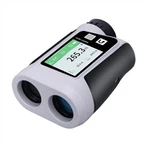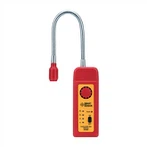Introduction on How to Use a Multimeter to Check Whether the Circuit is Short - Circuited or Grounded
If you want to check whether the circuit is short-circuited, first cut off the power supply of the circuit, then open each load switch, and use the ohm range of the multimeter to measure the resistance between every two wires. Under normal circumstances, the greater the resistance, the better. If you want to determine whether the circuit is grounded, you can use the ohm range of the multimeter to measure the resistance of each wire to the ground. Again, the greater the resistance, the better. It should be noted that using a multimeter to check whether the circuit is short-circuited or grounded is inaccurate and not advisable. If the grounding or short-circuit resistance is extremely small, it can be detected by a multimeter, but if the resistance is a bit larger, the multimeter cannot detect it. In a 380V low-voltage circuit, a 500V insulation resistance tester should be used for measurement. Whether it is between the wires or to the ground, the resistance should be above 0.38 megohms, otherwise it is unqualified.
First of all, it is necessary to distinguish between the live wire and the neutral wire.
For the ground wire: Set the multimeter to the AC voltage range, and the gear should be higher than 220V. Insert the red test lead into the voltage hole and do not insert the black test lead. Then insert the red test lead into one of the sockets and observe the reading.
The wire with the largest reading is the live wire, the wire with a smaller reading is the neutral wire, and the wire with basically no change in the reading is the ground wire.
If there are two readings that are small and one reading that is large, it means that the ground wire is not grounded and the ground wire is connected to the neutral wire. Then there is no need to carry out the second step of measurement.
Set the multimeter to the "short-circuit" test function (if there is no such function, you can set it to the resistance test). Connect the red and black test leads to the ground of the circuit and the ground of the mains supply respectively. If the test result shows a short-circuit or the resistance is extremely small, then the circuit is grounded; otherwise, it is not.
To check for leakage and grounding, set the multimeter to 200M. For example, when measuring the insulation of equipment, connect one test lead of the multimeter to the equipment casing or the ground wire, and the other test lead to the circuit. When measuring the insulation, do not touch the test leads with your hands to prevent measurement errors.
Set the resistance range of the multimeter to 20K or 200K. Turn off the main power supply and the load power supply. Connect one test lead of the multimeter to the live wire and the other test lead to the ground wire, and check the resistance value. Then connect one test lead to the neutral wire and the other test lead to the ground wire, and observe the resistance values of the two measurements. If the resistance value in one measurement is above 7.3 or 14 (the unit should be specified according to the actual situation, such as megohms), it indicates that the live wire or neutral wire connected in that measurement is leaking electricity.





